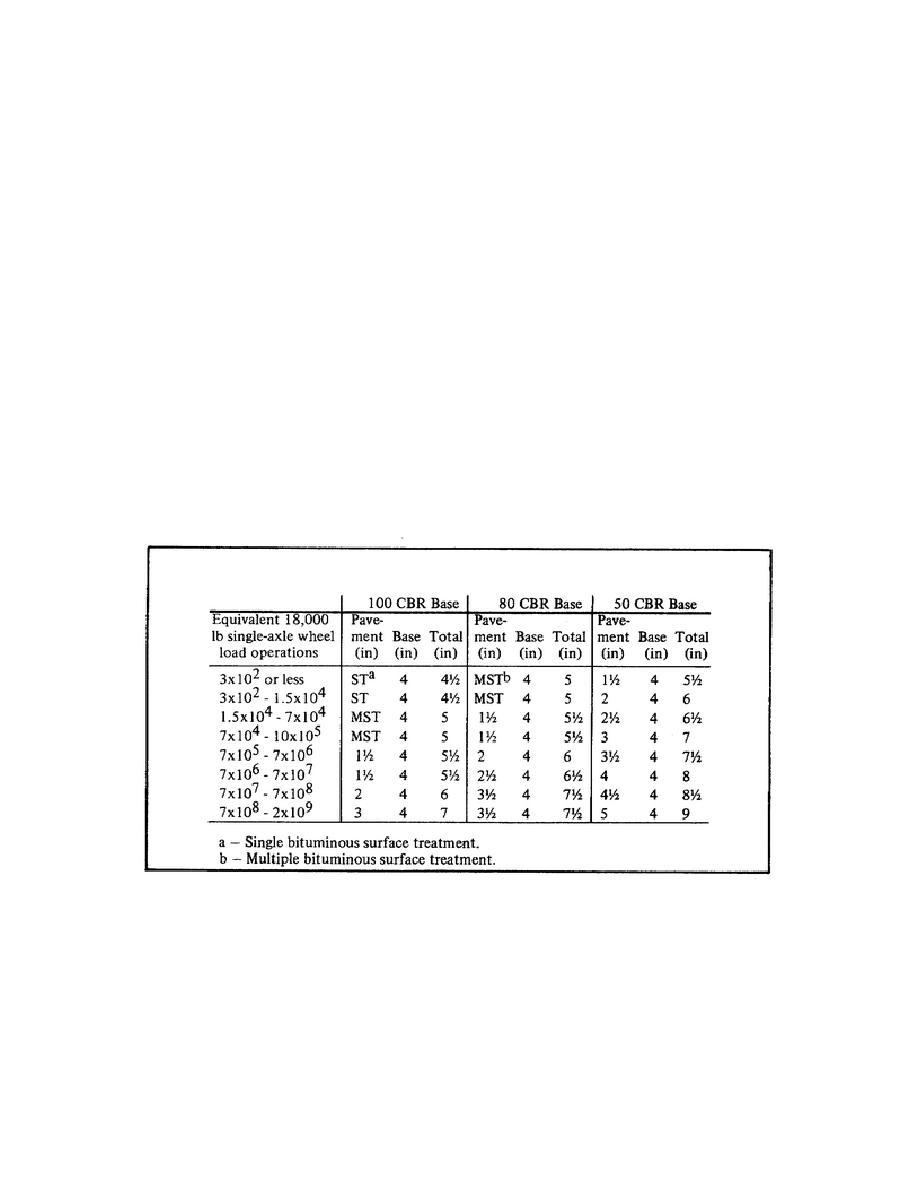
Lesson 1/Learning Event 3
Determine Cover Requirements for Subbase and Base
The method you use to determine the cover requirements for subbase and select material is the same
method you used to determine the total structure thickness in Learning Event 5. Enter the horizontal
scale at the proper EODL, proceed upward until it intersects the correct CBR curve line, then left to
determine the correct cover requirements in inches. For example, using Figure 8, an EODL is 3.7 x 106
and the subbase CBR is 40. You will find that the cover requirement is 4 inches.
Use the same method to determine the cover requirement for the base as for the subbase and the total
structure thickness. (Refer to Table 8.)
For example, using Figure 8, an EODL is 3.7 x 106 and the base CBR is 50. You will find that the cover
requirement is 3.5 inches. Table 9 shows the recommended minimum thickness of pavements and base
courses for roads.
TABLE 9. RECOMMENDED MINIMUM THICKNESS OF PAVEMENT AND BASE COURSE
FOR ROADS
Expedient Flexible Pavement Design for Road
As a starting basis for the expedient flexible pavement road design, the following equivalent loadings
(Table 7), in terms of 18,000 lb single-axle dualwheel loads per day per Division, number of Divisions
supported, and design life are suggested. In this tabulation the most critical Division load was selected
for the Division Support Area, whereas in the other areas the Division loads were adjusted to more
closely reflect the tactical needs. In each case, it is strongly recommended that you select the
appropriate equivalent Division operations per day for the area you are in and multiply it by the actual
30



 Previous Page
Previous Page
